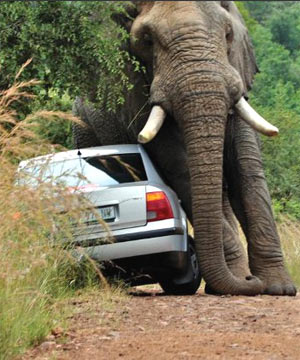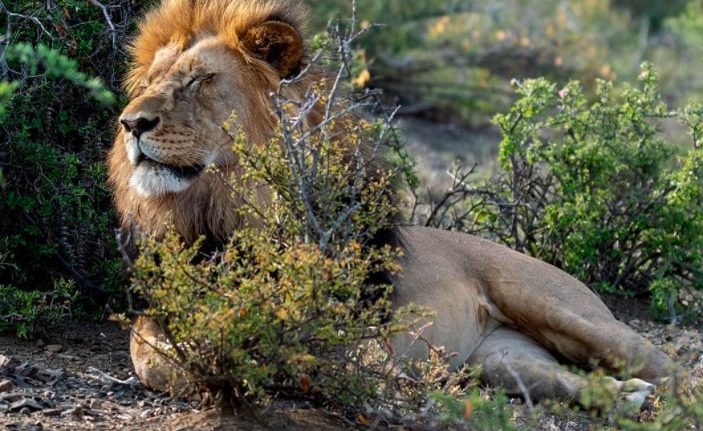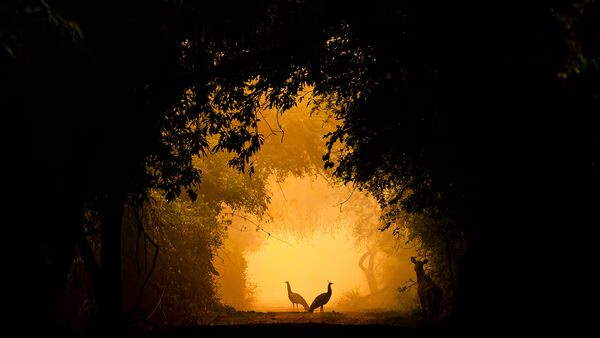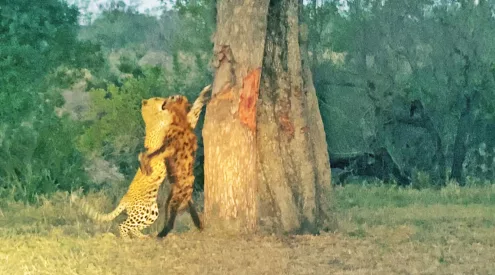South Africa’s fauna and flora are world-famous. The diversity in our landscape as well as our wildlife is what makes our country such an interesting holiday destination.
International, regional and local guests are enticed by our wildlife. While on safari, the Big 5 is arguably the most famous sight first-timers want to lay eyes on. Once these animals have been checked off, attention spans may fizzle out for novice bush visitors.
While the Big 5 are very interesting, there are certain members of this animal ‘community’ that are legendary for their antics.
From the escape artist that is Sylvester the lion, to Amarula the great: Here is a list of South Africa’s most legendary animals that are not just the Big 5.
Sylvester the lion
Sylvester the lion was made famous for his great escape(s) from the Karoo National Park in 2015. Sylvester, affectionately known as Spook, eluded expert trackers for over three weeks. His search party cost over R500,000 and in his time away from home, Spook killed 28 sheep, a Nguni cow, and a kudu. His entire journey spanned over 350km. Following Sylvester’s second runaround, this time with a tracking collar, SANParks made the decision to relocate the unsettled lion to the Addo Elephant National Park. You can now visit him at Kuzuko Lodge.
Majestic photos by @nature.through_my_eyes of the bond between coalition brothers, Fielies and Sylvester (aka Spook). These lions have an amazing story — both had uncertain futures until they found a home at Kuzuko 🦁🦁 #LegacyHotels #Safari #ThursdayMotivation pic.twitter.com/DR5wZfY2IS
— Kuzuko Safari Lodge (@KuzukoLodge) May 30, 2019
Amarula the elephant
This elephant bull became famous for flipping a car in Pilansberg National Park in 2011. Amarula was in musth, which is when an elephant bull experiences a surge in reproductive hormones and becomes highly aggressive. The driver of the car, John Somers, said that his life had flashed before his eyes when the massive elephant pushed himself against the car before turning it over. Amarula was transferred to Pilansberg from the Kruger National Park in 1998.

Amarula getting frisky. Image: Pilansberg National Park
3 January 2018.
The majestic Amarula on Moloto close to Nare link/Sefara junction.
Tinged by Jann-Rick pic.twitter.com/OSBf4n3bec— Latest Pilanesberg (@LatestPilanesBG) April 10, 2020
Londolozi wild dogs
Londolozi Private Game Reserve had no wild dog births in over a decade until May 2020. A healthy litter of 10 pups were born during lockdown, a major win for the endangered species. A few short weeks after Londolozi announced the news, game ranger James Tyrrell took to social media to announce that 7 pups were missing. He had gone to check on the den and when the mother called, only 3 pups emerged. Hearts across the nation broke in fear that the 7 pups were dead.
Shortly after the news broke, the adult dogs were spotted with 9 pups on the Londolozi/Mala Mala boundary. Wild dog expert Grant Beverley told Tyrrell it has been recorded that dogs can have two dens completely separate, up to 6 kilometres apart. ‘It didn’t seem to make sense for a pack of two to do this though, but that must have been what they were doing.’ And order was restored.
The strawberry leopard of Madikwe Game Reserve
A male leopard with a strawberry-colored coat made global headlines in 2012 for his colouring. The cat was spotted in the Madikwe Game Reserve and an image of the animal captured by photographer and safari guide Deon De Villiers was sent to Panthera, a US-based wild cat-conservation group, according to National Geographic.
Panthera’s former Chief Conservation Officer Luke Hunter believed the animal has erythrism. This is a genetic condition that causes either an underproduction of dark pigment in the coat or an overproduction of red pigment.
Stoffel the honey badger from Moholoholo Animal Rehabilitation Centre
Stoffel the honey badger became famous in 2014 for a similar reason to Sylvester. The honey badger showcased his intelligence and attempted to escape his enclosure at the Moholoholo Animal Rehabilitation Centre numerous times.
Stoffel had been hand-raised by a farmer before being brought to Moholoholo in the 1990s, according to the centre. He was initially allowed to roam free in the centre but he began to cause quite a stir, resulting in him living in a natural quarter-hectare (2 500m2) camp.
The honey badger escaped his camp to fight with the lions on the property and landed up spending two months in the hospital clinic. When he was taken back to his enclosure, he tried to get back to the lions.
Moholoholo was sponsored by Rotary Club to build the honey badger a brick house, which he escaped from within a few hours.
Stoffel is adored by the team at Moholoholo and call him ‘ambassador for his species.’
Image: Twitter/ Kuzuko Safari Lodge/ @KuzukoLodge



















